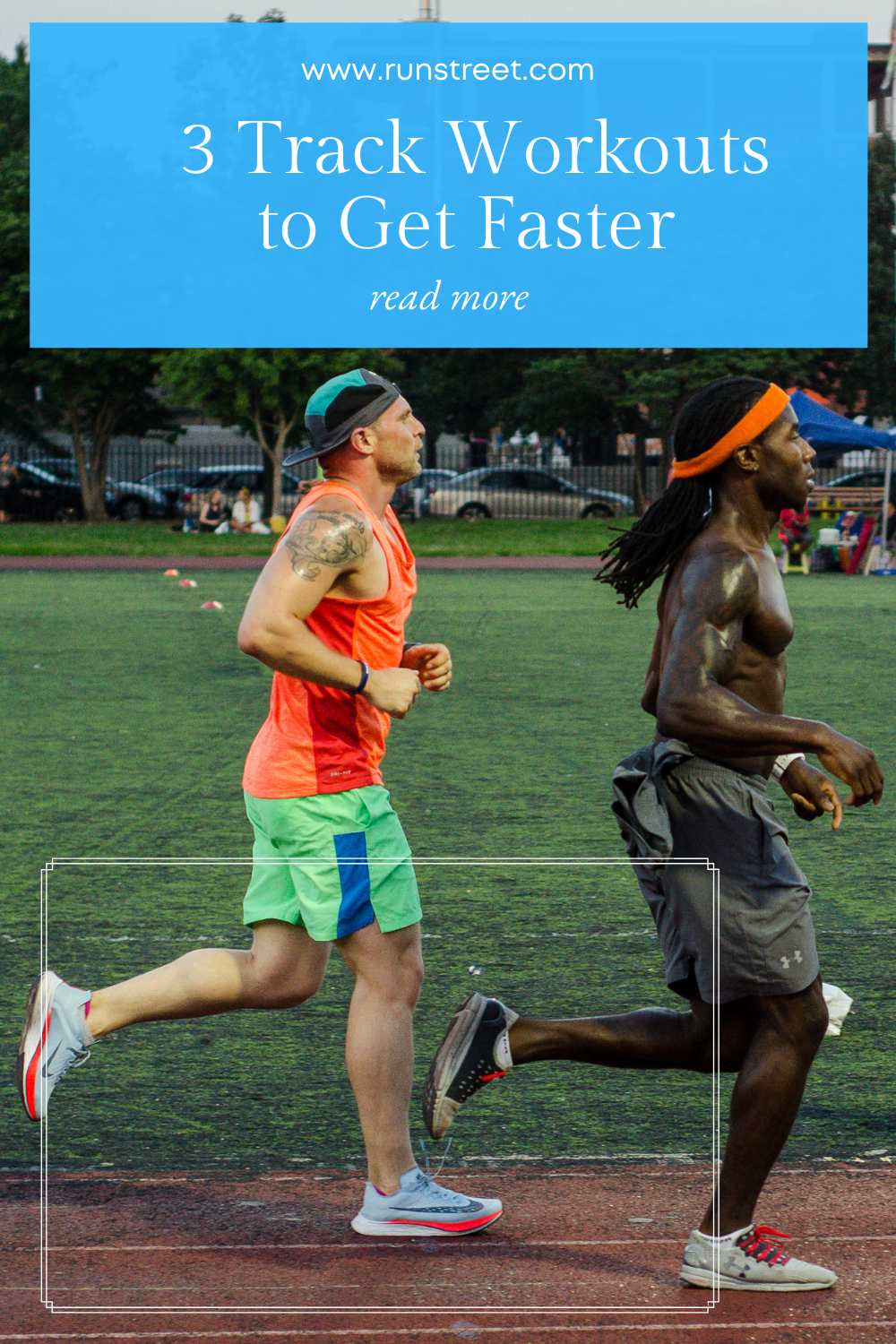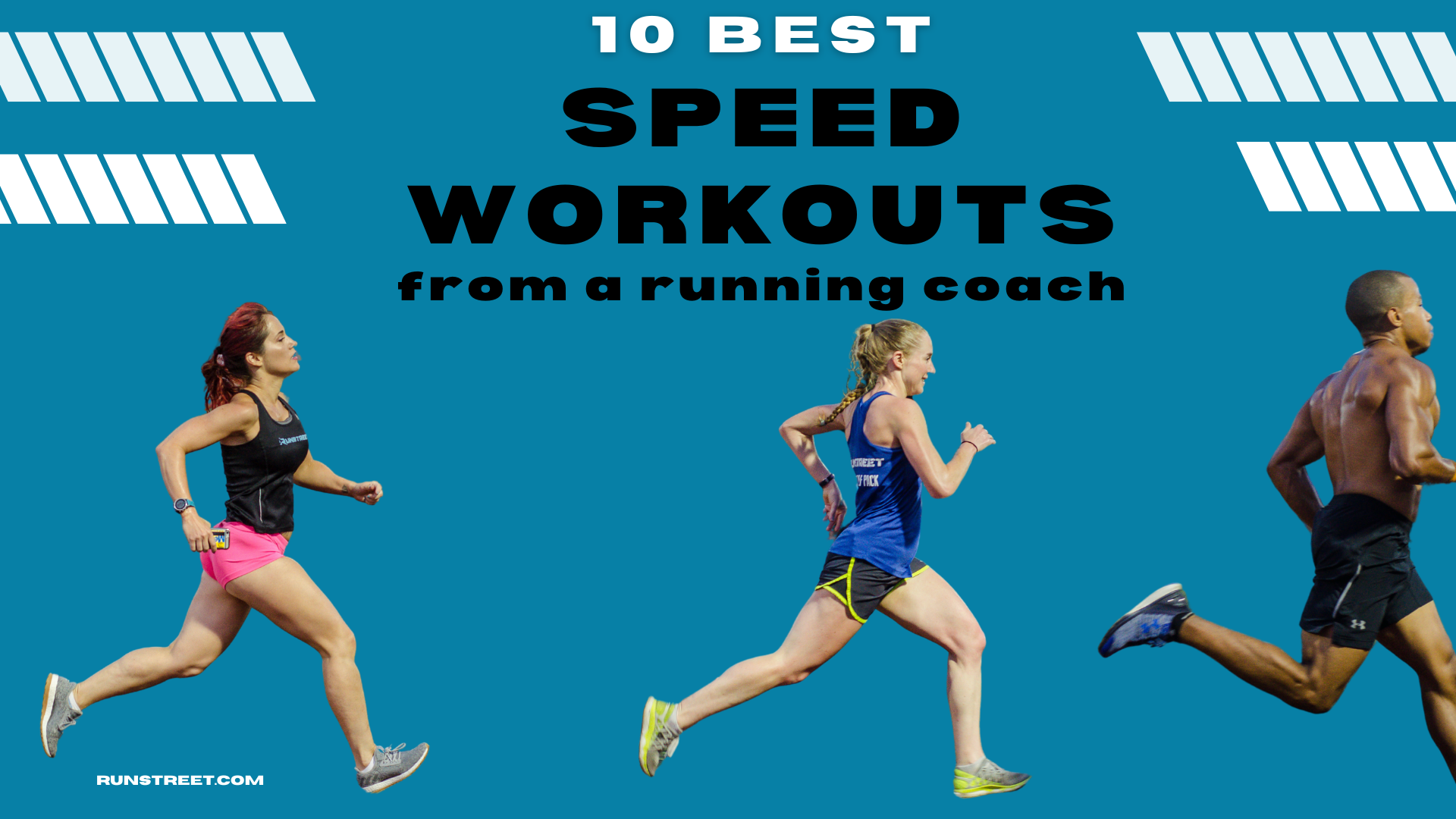3 Best Track Workouts from a Run Coach
Photos by Marques Jackson Photography.
By Marnie Kunz,
Certified run coach and trainer
Track workouts are one of the best ways to become a faster runner, as well as improve your fitness level, metabolism, running efficiency, and form. Whether you want to lower your 5K race time, get faster for your next half marathon, or just become a stronger runner in general, track workouts will condition your body and mind to perform better as a runner and athlete. Try these three best track workouts to get faster. You can adapt these workouts to any fitness level. If you are a beginner runner, you can do fewer repeats and shorter distances and build up to the full workouts. For intermediate runners, you can add more intervals to the workouts if you are training for a longer race such as a half-marathon or marathon.
The best way to become a better runner while minimizing your risk of injuries is to follow a training plan designed by a running coach. Visit the Runstreet Training Center for a selection of premium training plans designed by me, a certified run coach and personal trainer. Whether your goal is to run a 5K or to PR in your next marathon, I can give you a personalized training program to help you succeed with your big running goals.
Benefits of Track Workouts
I have run these track workouts in my own training as a track runner as well as coached people using these workouts, and I used to coach our Runstreet Track Tuesdays workouts at McCarren Park in Brooklyn. I’ve seen so many runners improve their race times and become stronger, more efficient runners from doing these interval workouts regularly.
Track workouts are also a great way to boost your overall fitness level in a short amount of time. The intensity of track running helps strengthen your glutes, hamstrings, quads, calves and other lower body muscles, boosts metabolism, and burns more calories than slow, relaxed pace running. And of course, best of all, track workouts train your body to perform better, improving your leg turnover speed and oxygen efficiency, which will make your base run days feel easier and your race times become faster.
Here are some of the main benefits of speed workouts:
Improved leg strength. Speed training increases your leg strength, which helps give you more power when running. Your leg muscles help get you up hills and through grueling runs and races.
Better leg muscle definition. According to the American Council on Exercise, speed work gives you more defined leg muscles and glutes. All you have to do is tune into Olympic sprinting to see the incredible muscle definition that sprinting causes.
Better running form. Adding speed workouts to your workout routine will help you run better and maintain good form. Also, doing some running drills like butt kicks as part of your dynamic warm-up will help your running form improve.
Improved running speed in races and training. Speed work will train your body and mind to perform more efficiently. You will start to see faster race times with consistent speed work.
Boosts metabolism. Track speed workouts burn more calories than slow running, and they can be an integral part of a weight management plan.
Before you begin doing speed workouts, make sure you have a solid running base and have been running consistently for at least 6 weeks.
400-Meter Intervals Workout
The 400-meter intervals workout is a great start to ease into track workouts, and this workout is also good for advanced runners, as you can easily add more repeats and intensity.
For a brief background, 400 meters is one lap around a standard outdoor track, equal to .25 of a mile. This is an ideal distance for an easy-to-remember, effective speed workout. If you are using Rating of Perceived Exertion (RPE) for your running training plan, you can do the 400-meter intervals at an 8 effort level (out of 10).
Here is a sample 400-meter intervals workout:
Run 800 meters (2 laps around a standard track or .5 of a mile) at a relaxed, easy pace to warm up. Stretch, including dynamic stretches to prepare for speed work.
Run 400 meters (1 lap or .25 of a mile) fast, at 80% effort level.
Jog 400 meters at a relaxed, slow recovery pace.
Repeat to run a total of 6 x 400-meter fast reps and 6 slow recovery jogs.
Cooldown: Jog 800 meters to cool down. Stretch, including static stretches.
Do this 400-meter workout to get faster.
Ladder Workout
If you are easily bored or have a short attention span like me, the ladder workout is great. The ladder workout includes short intervals that build up to longer intervals (going “up the ladder”), then goes back down to shorter intervals before cooling down. These track workouts add variety to your running and break up the run so you won’t even notice the miles adding up as you go.
Ladder workouts improve your body's ability to run fast even when you experience fatigue. They're easiest to do on a standard running track but distance runners can also do this workout on the road and measure the distances with a running watch or app.
Here is a sample ladder workout to incorporate into your speed training program:
This ladder workout will improve your speed.
Run 800 meters (half a mile or 2 laps on a standard track) at a relaxed pace to warm up. Stretch, including dynamic stretches to prepare for speed work.
Run 200 meters (one half a lap or .125 of a mile) fast, at about 80% effort level
Jog 200 meters at a slow, relaxed pace for active recovery (20-40% effort level)
Run 400 meters (one lap or .25 of a mile) fast, at 80% effort
Jog 400 meters at a slow, relaxed pace for active recovery
Run 800 meters fast (two laps or .5 of a mile), at 80% effort level
Jog 800 meters at a slow, relaxed pace for active recovery
Run 400 meters fast, at 80% effort level
Jog 400 meters at a slow, relaxed pace for active recovery
Run 200 meters fast, at 80% effort level
Jog 200 meters at a slow, relaxed pace for active recovery
Run 800 meters at a relaxed pace to cool down. Stretch, including static stretches.
Track Fartleks Workout
Fartleks — Swedish for “speed play” — are informal speed workouts that can be used at the track. If you are new to speed work or just getting back into speed work, try this fartleks track workout to start building your speed.
Jog 800 meters (2 laps around the track or .5 of a mile) at a relaxed, easy pace. Warm up with dynamic stretches.
Run 1 lap on the track (400 meters), going at your regular, relaxed pace on the curves, and step up your intensity on the straightaways. Every time you hit the straight stretch on the track, pick up your pace to run at about 80% effort level of exertion. Then slow down to a recovery jog on each curve.
Repeat for a total of 4 laps for your fartleks workout (8 short speed bursts on the straightaways).
Jog 800 meters at a relaxed pace to cool down. Stretch.
Total Workout Distance: 2 Miles
You can add more distance to your fartleks workout as you get acclimated to it. For intermediate runners, start with 6 laps for your speed workout and build up to 8 laps. You can also push the pace for your intervals and even go as fast as a sprint (90% effort level).
Related Post: Fartleks Workouts to Help You Run Faster
How Often To Do Track Workouts
If you are new to speed work or just getting back into track workouts, start with one speed workout a week, followed by a rest day or easy training day. Once you are used to speed workouts, you can incorporate two speed workouts a week into your training. It’s important to have a recovery day after your speed work so don’t do back-to-back speed session days. Easy run days are important to balance out the intensity of your speed training and allow your muscles to recover.
For more on training principles to incorporate into your running, check out how progressive overload can help your running. If you need a customized running plan designed by a certified running coach to help you meet your goals, check out the Runstreet Training Center.👋
Let me know if you try any of these speed workouts. Get more running tips and inspo by following @Runstreet on Instagram. Tag us to share your workouts and get cheered on. Happy running to you!😊
Related Posts: 5 Running Workouts to Get Faster, How to Do Tabata Running Workouts, Interval Training for Beginners, 5 Speed Workouts for 5K Success
Marnie Kunz is a NASM-certified trainer and USATF- and RRCA-certified running coach based in Brooklyn, a dog lover and Akita mom, and the founder of Runstreet.





